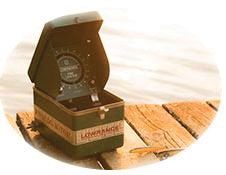Anglers of all skill levels spend lots of time and money on equipment, from fishing lines to all kinds of other equipment, and on one of the least understood products in today’s modern fishing electronics: sonar.
Sonar is an acronym for Sound Navigation Ranging. This is an electronic machine that sends sound waves called pings into the water and then receives these pings back. Understanding what this machine does and how to interpret the data is important so anglers can find fish, bait and structure.
In 1906, an American made the very first two-dimensional world machine called sonar. It was invented to find icebergs. Then, in 1915 the Allies used sonar to find submarines during the First World War. So sonar has been around a long time, and the basics have not changed much at all.
In the 1950’s, Carl and son Darrell Lowrance came up with the Little Green box and called it a Fish LO-K-TOR. This Little Green Box changed sport fishing forever. With this device, anglers learned how to find structure, bait and schools of their favorite fish.
This technology remained unchanged for many years as anglers came to understand what the machines would reveal. With this machine, anglers learned how to find and catch fish out in open water.
Now with the latest technology, anglers have access to three-dimensional technology called Side Scan and Down Scan. This technology can scan waters to 300 feet deep and from one side of the water column up to 600 feet on each side. With this new technology, anything in the water column can be easily spotted and marked with Global Positioning Systems.
This Structure Scan technology can not only find fish, but search and rescue services can find cars, bodies, aircraft and much more with great accuracy.
These high tech units can be tuned to the angler’s requirements and conditions with very little effort. One of the most commonly neglected is the power or the sensitivity setting. Set the sensitivity to AUTO and the microprocessor will automatically adjust the sensitivity based on the depth of the water.
Another common installation problem with these units is that the transducers are not in the right place. This part of the unit is sending and receiving echoes through the water. In order for it to work properly, it must be in direct contact with the water. This transducer must shoot straight down for it to read properly.
Once these machines are tuned properly, they can show anglers structure and fish as never before. Just hit the “AUTO” for SENSITIVITY and DEPTH RANGE.
Copyright, Southern Fishing Schools Inc. For more information visit www.southernfishing.com or call Ken at 770-889-2654.
